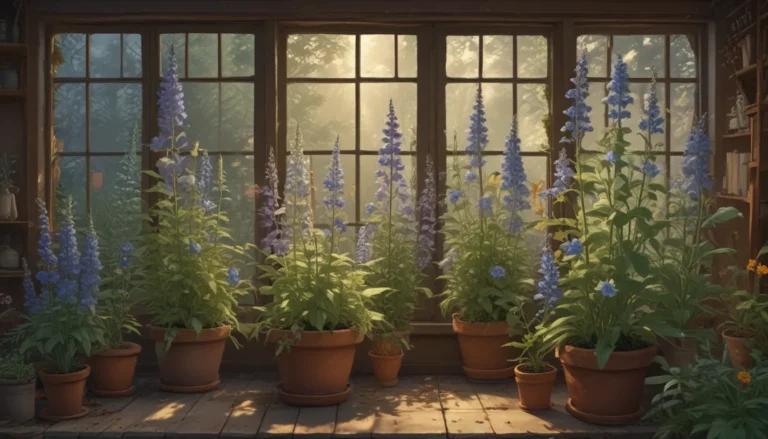A Comprehensive Guide to Growing Hardy Snowdrops

Are you yearning for spring to arrive a little early in your garden? Why not try growing Galanthus flowers, more commonly known as snowdrops? These charming blooms are among the first to make an appearance in late winter and early spring, their snowy heads nodding cheerfully as they push through the frozen ground.
If you’re considering adding snowdrops to your garden, you’re in luck! This article will provide you with all the information you need to successfully grow and care for these delightful flowers. Stay tuned for tips on cultivation, propagation, maintenance, and more!
What Is Galanthus?
Galanthus, or snowdrop flowers, belong to a genus of 20 closely related species of bulbous perennial herbaceous plants in the Amaryllidaceae family. These elegant blooms are native to southern Europe, the Middle East, and Eurasia, including Turkey and Iran, and are prized for their early blooming white drooping bell-shaped flowers.
With their distinct appearance of white petals adorned with green splotches, snowdrops are a popular choice for gardeners looking to add a touch of elegance to their landscape. These woodland flowers thrive in USDA Hardiness Zones 3 to 7 and prefer organically rich, moist, and well-draining soil.
Cultivation and History
Snowdrops have a rich history that dates back to ancient times. First described by the classical Greek author Theophrastus in the fourth century BC, these flowers were later named Galanthus by Carl Linnaeus, a renowned Swedish botanist and zoologist, in 1753.
Despite their association with British gardens, snowdrops likely made their way to Europe in the 16th century and have since naturalized in many regions around the world. Known for their resilience and adaptability, snowdrops continue to captivate gardeners with their delicate beauty and early blooming nature.
Propagation
Snowdrops are known to spread through two primary methods: dropping seeds and generating bulb offsets. To propagate these charming flowers, you can divide bulb perennials every few years to thin them out, relocate them, or share them with friends.
When dividing bulbs, use a trowel to carefully extract clumps from the soil and replant them in a new location or container. This process not only helps manage the growth of snowdrops but also allows you to expand your garden or share the joy of these blooms with others.
How to Grow
Growing snowdrops is a straightforward process that requires minimal effort. Planting bulbs in groups encourages the formation of clumps, which will expand and create a stunning display of white blossoms in your garden.
Whether you choose to plant snowdrops in the spring or fall, ensure the soil is well-worked and the bulbs are positioned at a depth of three inches with the pointed top facing up. By planting bulbs in groups of 10 or more, you’ll create a visually appealing arrangement that will continue to flourish year after year.
After planting, allow the foliage to wither naturally, providing essential nutrients for the next blooming season. By following these simple steps, you can enjoy the beauty of snowdrops without the need for extensive maintenance.
Cheery Indoor Containers
If you’d like to bring the beauty of snowdrops indoors, consider planting them in containers with good drainage holes. Starting in February, force the bulbs to bloom indoors by planting them in potting medium mixed with bone meal or fertilizer.
Once the foliage appears, move the containers to a location with filtered sunlight and maintain moist soil to encourage blossoms. Whether indoors or outdoors, snowdrops are a versatile plant that can thrive in various settings with proper care.
Toxicity Warning
It’s essential to note that snowdrops are toxic when ingested and may cause skin irritation. When handling these flowers, use gloves to protect yourself and keep them away from pets and young children. By taking precautions, you can enjoy the beauty of snowdrops safely in your garden.
Growing Tips:
- Plant snowdrops when foliage is still green (“in the green”) in late spring.
- Ensure bulbs are planted immediately to prevent drying out.
- Choose a partly shaded location with well-draining but moist soil.
- Avoid heavy clay soils with poor drainage to prevent winter freeze damage.
- Snowdrops are tolerant of various pH levels, making them versatile in different garden settings.
- Incorporate compost and mulch to protect against summer drought and enhance growth.
Care and Maintenance
Once you have established a healthy mass of snowdrops in your garden, minimal care is required for these resilient plants. Divide clumps every few years to promote growth and ensure optimal blooming conditions. By maintaining a balance of nutrients and moisture, you can enjoy the beauty of snowdrops year after year with little effort.
Species to Select
When choosing snowdrop varieties for your garden, it’s essential to start with quality plants that will thrive in your specific climate. Two recommended species include:
Galanthus Nivalis
Known as the common snowdrop, this variety features smaller blossoms with a light fragrance and is hardy to Zone 3. With its delicate appearance and early blooming period between January and May, Galanthus nivalis is a classic choice for gardeners seeking a reliable and beautiful addition to their landscape.
Galanthus Elwesii
Nicknamed the giant snowdrop, Galanthus elwesii boasts larger, more fragrant blossoms and can reach a height of up to a foot. Native to various regions in the eastern Mediterranean, this striking variety features green blotches at the center of its flowers, adding visual interest to its elegant appearance.
Managing Pests and Disease
Snowdrops are generally resistant to pests and diseases, making them a low-maintenance addition to any garden. Deer and rabbits are deterred by the toxicity of snowdrop vegetation, while squirrels may occasionally feed on dry bulbs. To prevent issues such as gray mold and damping off, ensure proper drainage and avoid overwatering in areas with excessive moisture.
Quick Reference Growing Guide
- Plant Type: Flowering perennial bulb
- Flower / Foliage Color: White flowers with blue-green foliage
- Native to: Southern Europe, Middle East, Mediterranean, Eurasia
- Maintenance: Low
- Hardiness (USDA Zone): 3-8
- Tolerance: Tolerates frost and freezing, deer resistant
- Bloom Time / Season: Late winter, early spring
- Soil Type: Rich in organics
- Exposure: Full sun to partial shade
- Soil pH: Acidic through alkaline
- Time To Maturity: 2-4 years
- Soil Drainage: Well-draining
- Spacing: 3 inches apart
- Companion Planting: Viburnum, crocus, daffodil, hosta
- Planting Depth: 3-4 inches deep
- Uses: Mass plantings, borders, understory ground cover
- Height: 3-7 inches for common varieties
- Family: Amaryllidaceae
- Growth Rate: Divide bulbs every 3 years
- Water Needs: Keep moist
- Attracts: Bees and other pollinators
- Genus: Galanthus
- Common Pests: No serious insect problems
- Common Disease: Gray mold and damping off in poorly-drained locations
Chill-Defying Blooms
Are you excited to incorporate snowdrops into your garden and witness their enchanting beauty firsthand? By following the tips and guidelines outlined in this article, you can successfully cultivate these hardy flowers and enjoy their cheerful blooms year after year.
Whether planted in groups, containers, or borders, snowdrops offer a versatile and captivating addition to any landscape. With their early blooming period and resilience to harsh conditions, these charming flowers are sure to brighten your garden and herald the arrival of spring.
Ready to embrace the beauty of snowdrops in your garden? Share your thoughts and experiences in the comments below! And if you’re looking for more information on growing flowers, be sure to explore our other gardening guides for inspiration and tips.
Are you eager to add this charming flower to your garden? Stay tuned for more tips and advice on cultivating snowdrops and creating a vibrant garden! Don’t miss out on the opportunity to enhance your landscape with these delightful blooms.





